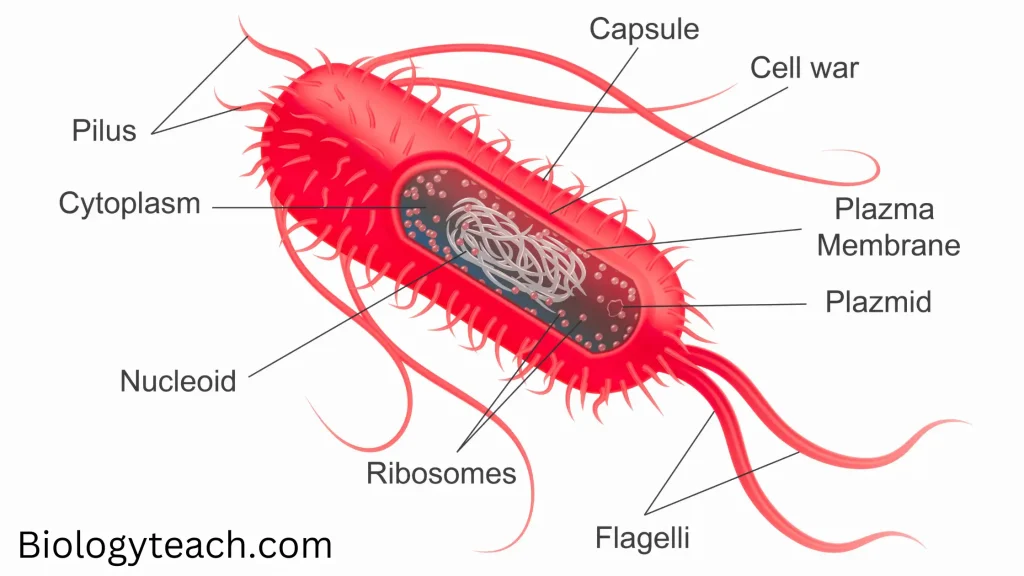Eating contaminated foods can cause serious illnesses. But Which Food Item Is Ideal For Bacterial Growth Servsafe? Understanding how bacteria grow allows us to prevent contamination.
Bacteria prefer neutral to mildly acidic foods. They cannot grow in highly acidic foods such as citrus and vinegar, but they thrive in vegetables, meat, and certain fruits. Servsafe and ideal for bacterial growth.
Temperature must be taken into account for bacterial proliferation. The temperature range between 40 and 140 degrees Fahrenheit at which bacteria thrive is known as the Temperature Peril Zone (TDZ).

They grow even faster at temperatures between 70 and 125 degrees Fahrenheit, so you must limit the time foods spend at these temperatures.
How Bacteria Grow in Food
Many factors impact bacterial growth rates. These include:
1. Temperature:
Temperature is a major factor in bacterial growth. Temperatures between 41 and 135 degrees Fahrenheit are optimal for bacterial growth. Therefore, store food in the refrigerator longer to prevent bacterial growth.
2. Nutrients:
To grow, all bacteria require nutrients or energy sources. Carbohydrates, protein, sugar, and starch are a few of the nutrients present. Typically, dairy and milk products are nutrient-dense, making them ideal for bacterial growth.
3. Oxygen:
All bacteria require nutrients or energy sources for growth. There are carbohydrates, protein, sugar, and starch among the extant nutrients. Dairy and milk products are typically nutrient-dense, which makes them optimal for bacterial growth.
4. Water:
Water is absolutely necessary for microbes to break down and consume food molecules. This is why food stored in a humid environment is susceptible to bacterial contamination.
In fact, the presence of excess water molecules around the food facilitates the growth of microbes, so water availability or water activity must be avoided.
5. pH Levels:
Most disease-causing bacteria grow best in neutral or moderately acidic conditions, around pH 4.6–7.5.
Very acidic foods like citrus juice or vinegar can help slow bacterial growth, but they do not make risky foods completely safe. Monitoring a food’s typical pH can help gauge risk.
6. Time:
Given enough time, even a small number of bacteria can multiply to dangerous levels. Limiting the time perishable foods spend in the temperature danger zone controls growth. Storing foods quickly at safe temperatures and thawing only as needed reduces risks.
High-Risk Foods Requiring Caution
Knowing optimal bacterial growth criteria, these foods merit extra safety care:
- Raw Meats may be contaminated during processing. Rich in nutrients, allowing rapid growth when mishandled.
- Eggs are susceptible to Salmonella. A high protein content makes an ideal growth medium if undercooked.
- Dairy: Provides ample nutrition. Unpasteurized products may contain pathogens. Requires temperature control.
- Cooked Grains like Rice, pasta, and potatoes support rapid bacterial growth when kept at unsafe temperatures.
- Cut Produce: Chopped fruits and vegetables provide more surface area for pathogen proliferation.
- Seafood: Raw shellfish and fish host viruses and bacteria. Low acidity doesn’t inhibit growth as much.
Preventing Foodborne Illness
While many factors influence bacterial presence, following food safety best practices reduces risks.
- Monitor temperatures: Refrigerate below 40°F. Cook and hold hot foods above 140°F. Minimize time in the danger zone.
- Practice Proper hygiene: wash hands and surfaces often. Avoid cross-contamination. Clean and sanitize equipment.
- Handle Carefully: Isolate raw meats/seafood from other items. Cook foods thoroughly to safe internal temperatures.
- Train Food Handlers and Get certified in safety protocols. Learn food science-based prevention techniques.
Caution with high risk items is important. But proper storage, cooking, cooling, and hygiene limit bacterial growth in all foods. Programs like ServSafe teach sound, science-based practices to maximize food safety.
FAQs about Bacterial Growth in Food
Which foods are most prone to bacterial growth?
High protein, perishable foods like meat, poultry, eggs, dairy, seafood, cooked rice/pasta, and cut fruits/vegetables merit extra care. Their high moisture and nutrient content facilitate rapid bacterial growth when mishandled.
What temperature range is considered the danger zone?
The FDA Food Code defines the danger zone for bacterial growth as temperatures between 40°F and 140°F. Perishable foods left too long in this range allow rapid pathogen proliferation.
How long can foods be left out at room temperature safely?
Bacterial growth happens rapidly at room temperature. Perishable foods should not be left out for more than 2 hours above 40°F (1 hour if over 90°F).
Does acidity impact bacterial growth in foods?
Yes. Most foodborne bacteria grow optimally at a neutral pH around 6-7. Very acidic foods with a low pH (3-4) can slow their growth. But acidity alone doesn’t make risky foods totally safe.
